Part III – The Mature Years: 1997-2000
In February 1997, the first commercial internet magazine dedicated to combat simulations was founded. COMBATSIM.COM was registered as a domain name by Doug Helmer and Leonard Hjalmarson [the author of this series – Ed]. These two Canadian simulation fans gave a voice and created a forum for the growing virtual community that was taking shape around combat simulations on the PC.
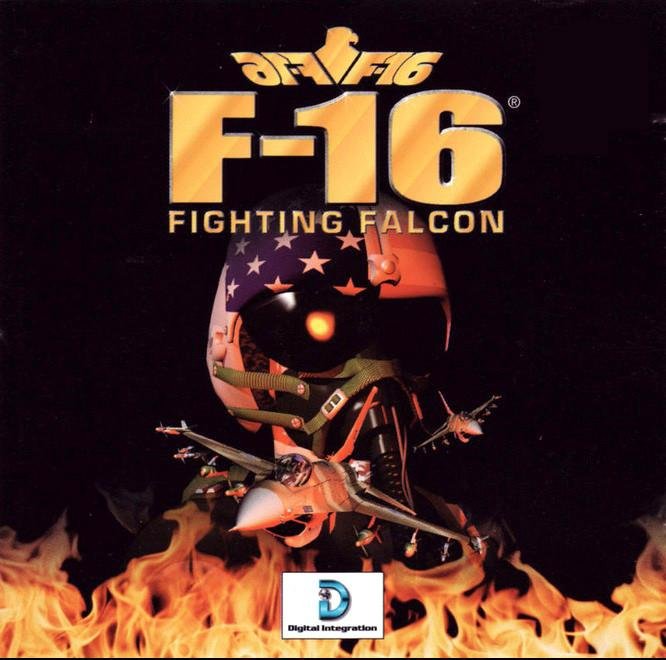
1997 – A busy year
In 1997 Digital Integration released F-16 Fighting Falcon which featured its unique ‘headlock’ target tracking system. Not long afterwards a patch was released that included 3dfx graphics card support.
Also, in 1997 Digital Image Design (DiD) released F-22: ADF, a title which had evolved from its previous release, EF2000 and was originally intended to be called Total Air War – a title that was eventually released. The game was innovative enough that DiD scooped two top games industry ‘Oscars’ at Milia d’Or Awards Ceremony in Cannes, France in February that year. This was the first time that Milia d’Or awarded first prize to a military simulation.

In the same year, Graphic Simulations released a new iteration of Hornet 3.0 entitled F/A-18: Korea, complete with 3dfx support. This detailed simulation of the F/A-18 Hornet had the most beautiful skies and clouds yet seen on the PC at that time.
Also, in 1997, Glass Technologies released Flight Unlimited III and Microsoft released Flight Simulator 98. Interactive Magic (iMagic) released iF-22, Eidos released Joint Strike Fighter (JSF) and EA released USNF 97. Joint Strike Fighter was developed by Innerloop in Norway. The graphics were stunning but required high-end hardware to notch them up (a Pentium 233MMX with 64MB of memory and 3dfx graphics card).
The 3D accelerator wars were heating up at this time, with NVIDIA, S3, ATI, Matrox and 3dfx vying for top honours. These were heady times for combat flight simulation but only the beginning of dedicated 3D hardware.
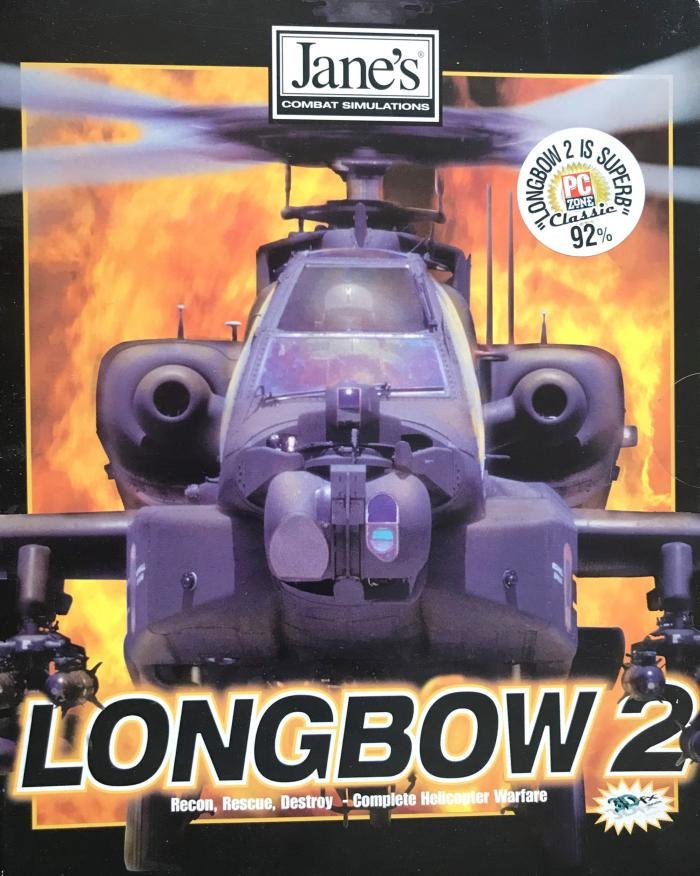
Jane’s Combat Simulations released Longbow 2 in November 1997; a game some consider to be the best helicopter simulation ever created. With a fully dynamic campaign system and the first use of dynamic lighting seen in a PC flight simulation, the game was both beautiful and challenging. Mission variety was huge, and a powerful mission planner made it even better. Jane’s innovations included voice narrative in-flight training, first seen in the original Jane’s Longbow.
Longbow 2 modelled three flyable helicopters: the AH-64D Longbow, the Kiowa Warrior and the Black Hawk troop transport. Multiplayer support was good and many dedicated Longbow squadrons sprang up on the internet.

Around the same time a voice-over-net utility called Roger Wilco was released. This utility ran in the background and allowed players to communicate with one another via voice using the same data channel as the simulation connection. In the early days, this required two sound cards but eventually the software and hardware matured to allow methods of separating sound channels and resources apart from what the game itself was using.
In early summer 1997 the film Titanic was released, a huge production destined for many Oscars. Evita was also a big hit this year.
Also, in 1997 Rowan’s Flying Corps took to the air and set a new standard for World War One flight simulations. This one featured three scripted campaigns and a fourth that was dynamic. Graphics were soon updated with 3dfx support and flight models were of a high standard. With Flying Corps, Rowan pioneered an auto-switching padlock system that took the player from an internal perspective to an outside player-to-target view when the bandit passed outside the front view area.
Flying Corps also saw larger furballs than we had ever seen before and was one of the earliest simulations to support force feedback. For the first time in a PC simulation, players could not only see and hear their guns firing but feel the recoil via the joystick. When the aircraft began to stall, the buffet effects were transferred via the stick to the wrist. It was an amazing advance.
The first company to release a force feedback joystick was CH Products. Its Force FX was expensive, large and used the serial port to communicate with the PC. While the stick worked great once configured, it was often difficult to get the PC to recognise the gear. COM ports and their interrupts, like a black art on the PC, caused many problems with serial port hardware. It would be almost two years before the first USB-based force feedback hardware arrived on the scene.
SIMHQ.COM was founded in 1997. This fansite grew to enjoy the support of thousands of simulation enthusiasts.
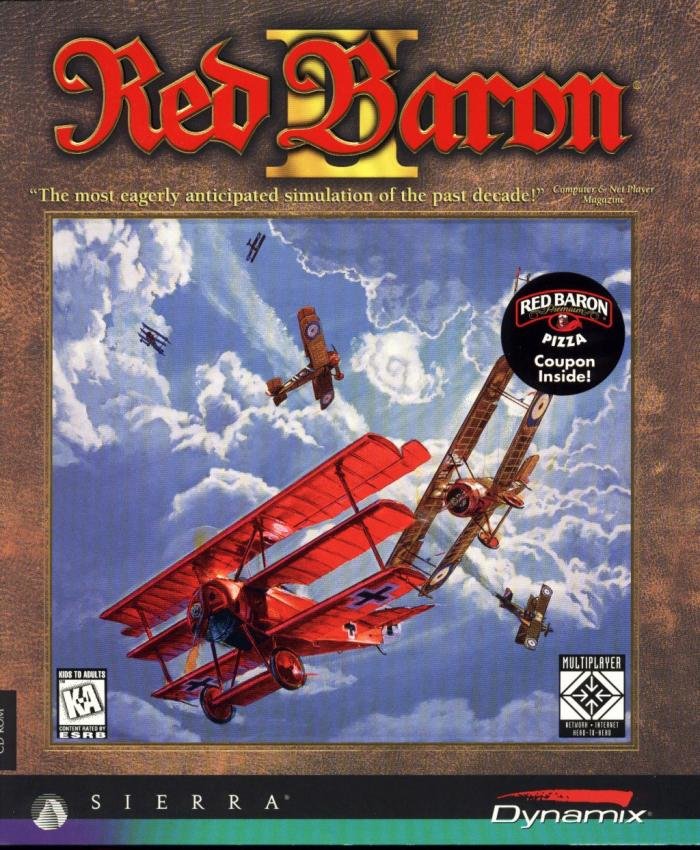
Later in 1997, Dynamix released Red Baron II (RBII). A new landmark for World War One simulations. RBII sported a fully dynamic campaign system and modelled more than a dozen flyable aircraft. The graphics were later updated with 3dfx support in a free patch. The multiplayer features of Red Baron II were also strong and the ability to paint your own aircraft and transfer the skin to other players, so they would see a unique aircraft, lent personality to the game.
Also, late in 1997 the second edition of the 3dfx Voodoo chipset arrived in such hardware as Canopus Pure3d II, and Orchid’s Righteous 3d II. This second-generation chip sported 2.5x the power of the first generation and game producers were quick to take advantage of the additional processing power.
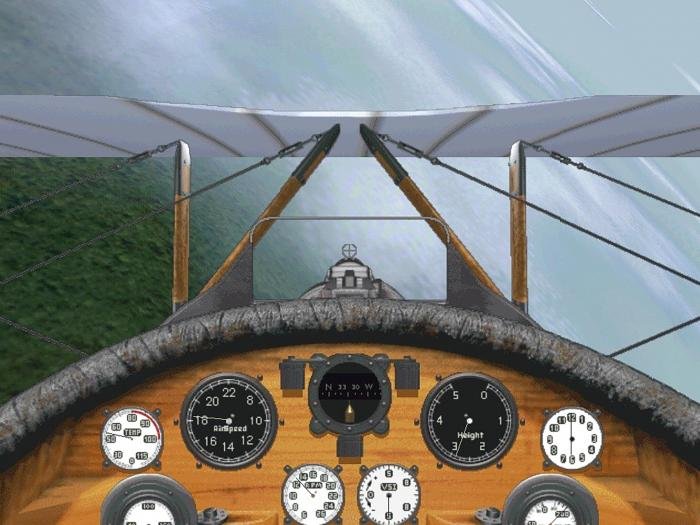
1998 – a landmark year
In 1998, MicroProse released European Air War, considered by many to be the best World War Two combat simulation ever. The initial release allowed only 640x480 resolution, but the game was atmospheric in the extreme. The voice and sound effects were excellent, and the wingman command structure was broad and effective.
Furthermore, flight models were solid, and the dynamic campaign supported large flights of aircraft and excellent action. The multiplayer features were also quite good. A huge variety of end-user modifications extended the life of this game, including sound packs, mission packs, campaigns and new aircraft.
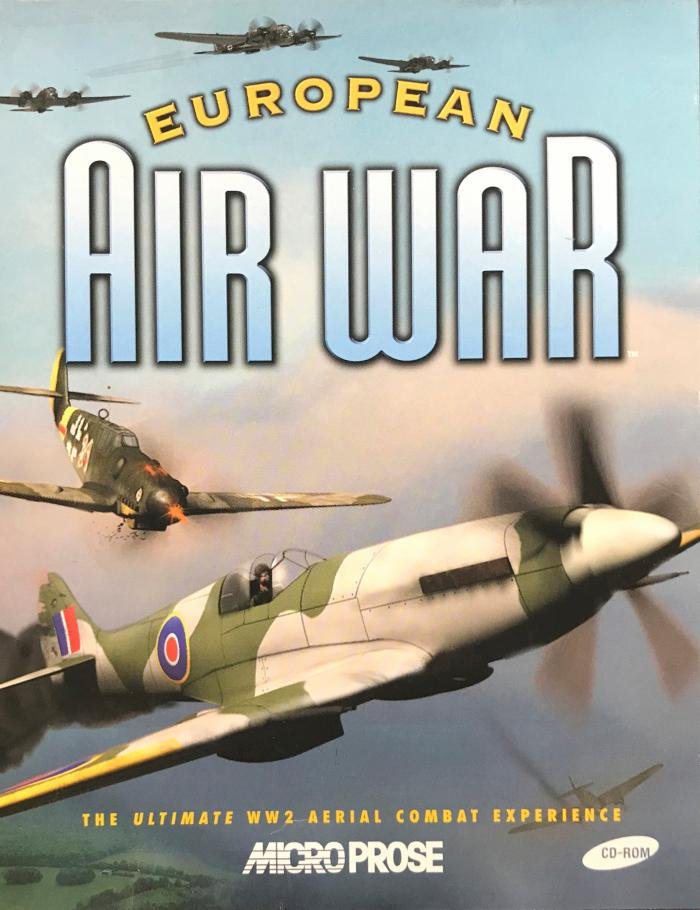
1998 was the year that Massively Multiplayer Online Games (MMOG) came into its own. In that same year, Air Warrior III appeared – an online-only simulation that sparred with Warbirds for air dominance. The online experience until 1997 was a mixed bag of bad connections, poor software and overworked hardware. But the improvement in online code and the rapidly growing horsepower of the PC was conspiring to change the face of online gaming. Microsoft launched its Gaming Zone in 1997 and Fighter Ace was released in November. By 1998 the Zone supported a number of multiplayer arenas, including one for Red Baron II and European Air War.
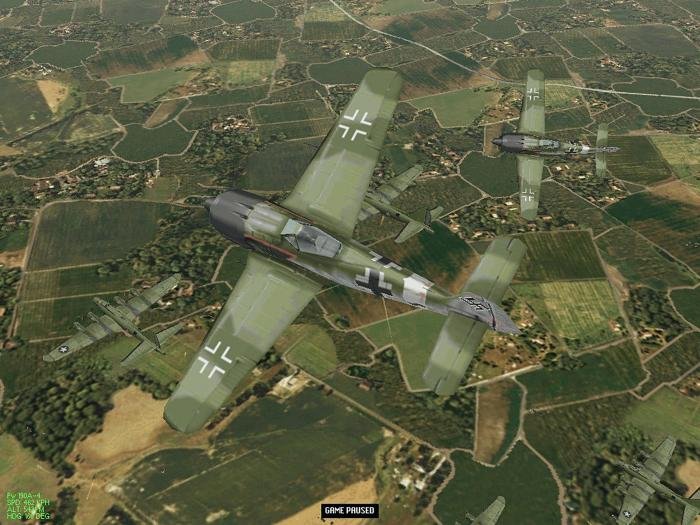
In 1998 iMagic Online’s Dawn of Aces took the player back to the world of biplanes and Lewis guns and Novalogic continued to grow its own MMOG venue with F-22 Lightning II in Novaworld.
During the summer of that year Logitech’s second entry into the force feedback market appeared with its Wingman Force joystick. This stick was an all-in-one solution, featuring both serial and USB connectivity, a twist handle for the rudder and a throttle wheel. The Wingman was in direct competition with Microsoft’s Sidewinder Force Feedback stick, released the previous year.
Some gamers were too busy in the theatres watching Saving Private Ryan to spend much time flying that summer. Jane released F-15 in the summer of 1998, which set a new milestone for jet combat simulations. F-15 sported the most detailed wingman and AWACS interaction yet seen. Flight models were outstanding, with the most detailed physics yet seen in a military flight simulation. Team tactics took on new meaning and the semi-dynamic campaign system created a highly immersive combat environment.
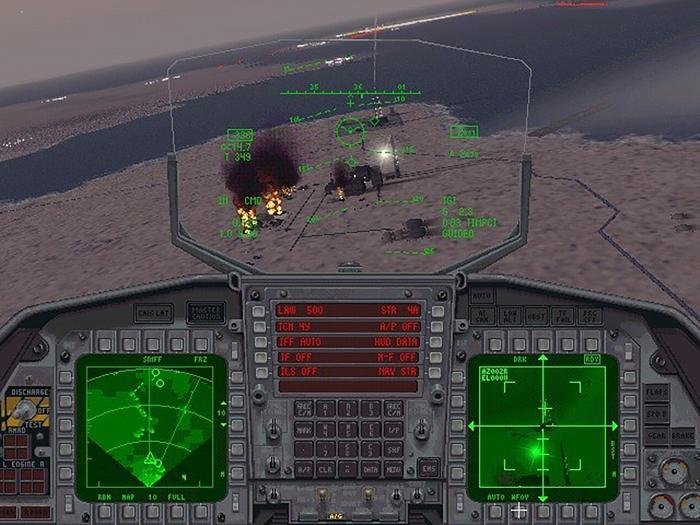
F-15 was produced by Andy Hollis, who also produced the Strike Eagle line for MicroProse. Andy’s dedication to combat simulations was battle-tested over the years and F-15 and Longbow II were both his products. F-15 epitomised the well-rounded ‘study sim’ – a simulation that was faithful to the small details of the F-15 weapon systems and avionics – yet was also immersive and involved a realistic combat environment.
In the spring of 1998, Mindmaker Inc released its Game Commander software, giving any PC gamer the opportunity to incorporate voice control in their favourite simulation! My first trials were with European Air War and then Jane’s F-15. I was stunned at the ability to simply say ‘drag left’ or ‘drop tanks’ and have my flight obey my orders.

EA released Israeli Air Force (IAF) by Pixel Multimedia in 1998, finally retiring the USNF engine. While IAF had great multiplayer features and modelled a number of flyable aircraft, the graphics engine produced an odd shimmering effect that bothered some players.
GT Interactive published SIMIS Team Apache, DiD released Total Air War and iMagic released its iF/A-18E: Carrier Strike Fighter. iF/A-18E was acclaimed for its campaign system and flight modelling but was plagued with installation and graphics issues.
In the spring Creative Labs released its latest sound hardware in the form of the Sound Blaster Live. This was by far the best gaming sound card released to date and with its ‘environmental extensions', or EAX technology, raised the benchmark for sound standards in PC games.
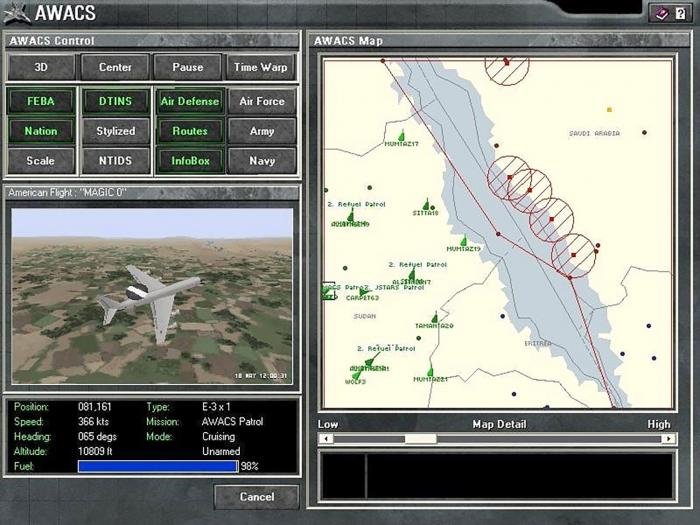
Jane’s Combat Simulations released WWII Fighters in the summer, with advanced graphics and incredible cockpits. The interface was unique: a WWII military museum. The aircraft themselves were the most detailed seen to this date and the game had excellent sound and fantastic clouds. WWII Fighters may have epitomised the 3dfx graphics Glide API.
WWII Fighters also had excellent multiplayer support and spawned another dedicated online community. While some players complained that the flight models were not detailed enough, there was plenty of challenge for the average player and the included mission builder extended the life and interest of the simulation. WWII Fighters was a stretch for hardware at the time but aged very well. (I have a vivid memory of flying head-to-head against Colonel “Bud” Anderson, a living combat ace and featured in the simulation, at the Electronic Expo in LA in 1999.)
DiD’s Total Air War (TAW) was another unique release in 1998, and like F22: ADF was destined to win design awards. TAW modelled a huge dynamic campaign environment. It allowed the player to fly in the war or to direct the action from a gods-eye AWACS view.
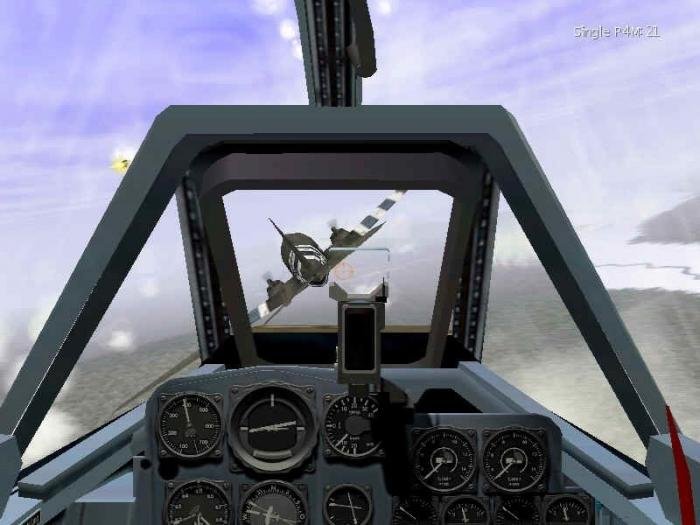
The war in TAW continued in real time whether the player flew or not. Uniquely, the AWACS module in TAW provided a real-time window to the action while the player could watch and direct intercepts from the AWACS map. Additionally, the War Room interface allowed the player to assess the strategic battle and adjust his strategy in order to win the war. Those who preferred simply to fly and fight could also play it that way.
TAW was great fun and sported a huge vocabulary, with a solid wingman command structure and the ability to interact with AWACS, JSTARS and ATC. TAW looked great under 3dfx, rivalling Jane’s WWII Fighters for raw beauty. It also rivalled WWII Fighters for longevity, and I played it for many years hoping for a graphics rewrite.
In autumn 1998 Microsoft released its first Combat Flight Simulator (CFS), based firmly on the FS98 engine. This release drove seasoned simulation fans crazy by slavishly following the unfamiliar conventions of the civilian series, including a unique and unfamiliar command style.
While CFS had much to commend it, including good flight models and great-looking terrain, it completely lacked wingman commands and a real campaign mode. At the same time, CFS was innovative with its pilot AI, creating situational awareness zones and simulating the AI pilot’s actual input to the control stick.
CFS appealed to a broad market, and due largely to the Microsoft name, outsold any other military flight simulation before 2001, virtually guaranteeing that Microsoft would return with CFS II.
By Leonard ‘Flightdoc’ Hjalmarson

